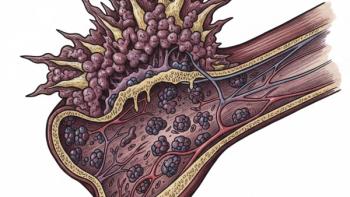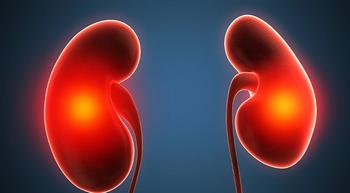
An Overview of Pancreatic Neuroendocrine Tumors (PNETs)
Key Takeaways
- PNETs are classified as functional or non-functional, influencing symptoms and treatment strategies. Tumor grade impacts prognosis and treatment plans.
- Diagnosis involves imaging, blood tests, and biopsy to assess tumor characteristics and spread, guiding treatment decisions.
Breaking down the rare gastrointestinal cancer, from diagnosis to treatment.
Pancreatic neuroendocrine tumors, or PNETs, are a relatively rare type of cancer that forms in the hormone-producing cells of the pancreas, known as the islet cells. Unlike the more common type of pancreatic cancer (adenocarcinoma), PNETs typically grow slower and may have different treatment approaches.
PNETs are classified into two main types:
- Functional (or Secretory): These tumors produce and release an excess of specific hormones (like insulin, gastrin or glucagon), leading to distinct symptoms such as hypoglycemia (low blood sugar), ulcers or rash. The tumor is named after the hormone it produces (insulinoma, gastrinoma).
- Non-functional: These tumors either do not produce hormones or do not release enough to cause recognizable symptoms. They are often discovered later, as they may only cause symptoms when they grow large enough to press on nearby organs or structures.
The grade of the tumor is also critical, describing how quickly the cells are dividing and growing. It is often graded as grade 1 (low-grade, slow-growing), grade 2 (intermediate-grade) or grade 3 (high-grade, fast-growing/neuroendocrine carcinoma). The grade significantly influences the prognosis and treatment plan.
Diagnosis: Identifying PNETs
Diagnosing PNETs involves a combination of imaging, blood tests and tissue biopsy.
- Imaging Tests: These are used to locate the primary tumor, assess its size and determine if the cancer has spread (metastasized). Common tests include:
- Computed Tomography (CT) scan and Magnetic Resonance Imaging (MRI): These provide detailed cross-sectional images of the pancreas and surrounding areas.
- Somatostatin Receptor Scintigraphy (SRS) or Gallium-68 DOTATATE PET Scan: Many PNET cells have somatostatin receptors on their surface. These scans use a small amount of a radioactive tracer that binds to these receptors, making the tumors light up on the scan. This is highly sensitive for finding PNETs, especially those that have spread.
- Blood Tests: These may measure levels of specific hormones (if the tumor is functional) or general tumor markers, such as Chromogranin A (CgA), which can be elevated in many PNET patients.
- Biopsy: A small tissue sample is removed, usually via an Endoscopic Ultrasound (EUS) with fine-needle aspiration (FNA), to confirm the diagnosis and determine the tumor grade. This is essential for guiding treatment.
Treatment Options for PNETs
Treatment for PNETs is highly individualized and depends on several factors, including the tumor's grade, size, location, whether it has spread and the patient’s overall health. Your oncologist will recommend a personalized sequence of therapies.
Localized Disease (Cancer has not spread)
- Surgery: This is often the preferred curative option for tumors that can be safely removed. The type of surgery depends on the tumor's location within the pancreas (e.g., a Whipple procedure for tumors in the head of the pancreas, or a distal pancreatectomy for tumors in the body or tail).
Advanced or Metastatic Disease (Cancer has spread)
For PNETs that have spread, the goal is often to control the cancer's growth and manage symptoms.
- Somatostatin Analogs (SSAs): Medications like Octreotide or Lanreotide are the cornerstone of treatment for many PNETs. They can help control symptoms (especially those caused by functional tumors) and have also been shown to slow tumor growth (anti-proliferative effect) in well-differentiated (low to intermediate-grade) tumors.
- Targeted Therapies: These oral drugs block specific proteins and pathways that tumors use to grow. Everolimus(an mTOR inhibitor) and Sunitinib (a multi-targeted kinase inhibitor) are approved for PNETs and can slow disease progression.
- Peptide Receptor Radionuclide Therapy (PRRT): This is a highly effective treatment for many well-differentiated PNETs that express somatostatin receptors (confirmed by a DOTATATE scan). PRRT uses a radioactive agent (e.g., Lutetium-177 dotatate) that is attached to a molecule that targets and delivers radiation directly to the tumor cells, sparing surrounding healthy tissue as much as possible.
- Chemotherapy: Traditional chemotherapy may be used, often for higher-grade (grade 2 or 3) PNETs or for those that have not responded to other treatments. Common regimens include combinations like Streptozocin/Doxorubicin or Temozolomide-based regimens.
- Loco-Regional Therapies: These are procedures to treat tumors that have spread to the liver, a common site of metastasis. Examples include:
- Hepatic Artery Embolization: Blocking the blood supply to the liver tumors.
- Radiofrequency Ablation (RFA): Using heat to destroy small tumors.
In the spring of 2025, the U.S. Food and Drug Administration
Potential Adverse Effects of Treatment
It is important to discuss potential side effects with your oncologist, as managing them is key to maintaining quality of life.
Surgery: Pain, risk of infection, bleeding, and potential development of diabetes or digestive issues if a large part of the pancreas is removed.
Somatostatin Analogs (SSAs): Diarrhea, abdominal pain, nausea, and the formation of gallstones with long-term use.
Targeted Therapies (e.g., Everolimus, Sunitinib): Mouth sores (stomatitis), fatigue, rash, diarrhea, and high blood pressure (hypertension). Everolimus can also cause elevated blood sugar.
Peptide Receptor Radionuclide Therapy (PRRT): Transient nausea and vomiting. Potential effects on bone marrow (low blood counts) and kidneys (usually mild and managed by the treatment protocol).
Chemotherapy: Nausea, vomiting, hair loss (varies by drug), fatigue, increased risk of infection (due to low white blood cell counts), and nerve damage (neuropathy).
Conclusion: Moving Forward
Receiving a diagnosis of PNET can be overwhelming, but it is important to remember that these are often manageableand treatable cancers, especially when well-differentiated (low- to intermediate-grade).
This overview is a starting point for your conversations with your care team. Key questions to ask your oncologist as you begin your journey include:
- What is the precise grade and stage of my tumor?
- Is my PNET functional or non-functional, and what specific symptoms should we monitor?
- What is the goal of the recommended treatment (cure, control, or symptom management)?
- Am I a candidate for clinical trials?
Understanding your specific diagnosis and treatment options, and actively participating in decision-making, will empower you throughout your cancer journey.
Reference
- “FDA Approves Cabometyx for Some Neuroendocrine Tumors,” CURE; https://www.curetoday.com/view/fda-approves-cabometyx-for-some-neuroendocrine-tumors.
This guide is designed to be a starting point. Your personal experience will be unique. By using this information as a foundation for your discussions, you can partner with your oncologist to make the best decisions for your health.
Editor's note: This article is for informational purposes only and is not a substitute for professional medical advice. Please contact your healthcare team with any questions or concerns.
For more news on cancer updates, research and education,





